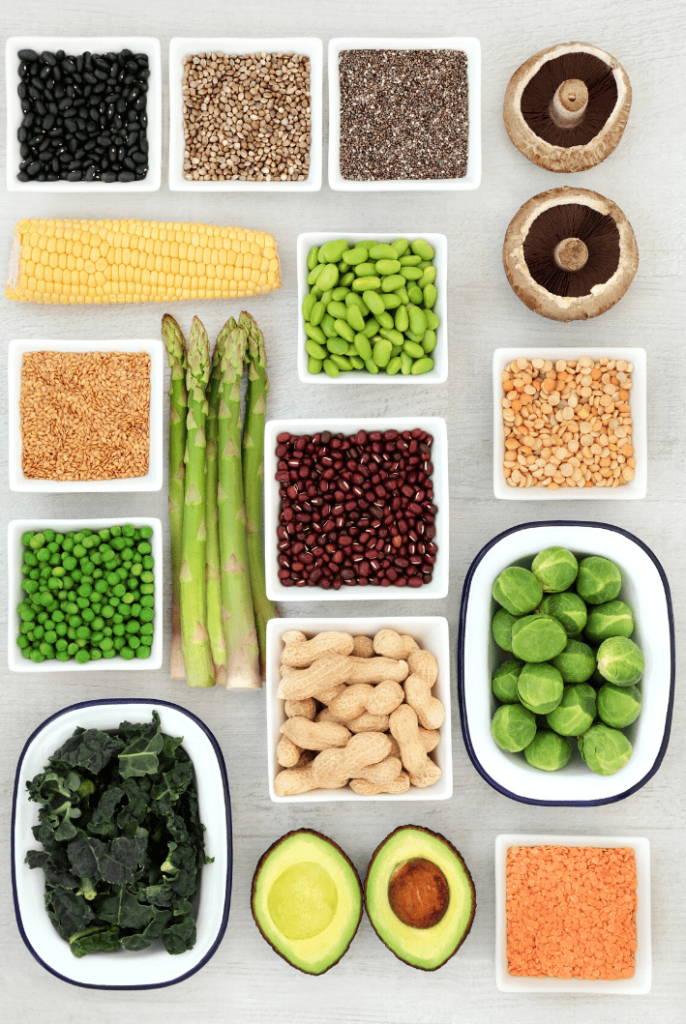Many people think that eating plants is expensive. After all, a small container of berries can cost upwards of $5. But plant-based foods are also some of the most affordable and healthiest items on store shelves.
A simple potato or can of beans costs less than $1 and can serve several people. Eating plant-based on a budget can help, as long as you know what to buy.
In this article, we’ll discuss whether eating plant-based is really affordable, the cheapest plant-based foods and top tips for shopping on a budget.
Whether you’re new to a plant-based diet or just want to add more plants to your diet, this grocery list for a plant-based diet is here to help make grocery shopping a breeze.
Can you eat plant-based on a budget?
I’ve been a vegetarian and dietitian for a decade now, and I feed my family of 4 a plant-based diet for less than $100 a week (in NYC). I am extremely budget conscious and think you can definitely eat a plant based diet on a budget – you just have to know where to look and shop!
While some plant-based foods, such as out-of-season fruits or vegetables or nuts and seeds, are expensive, others, such as most plant-based proteins, are very affordable.
Let’s do a little case study:
Boneless chicken breast is $3.20/lb Amazon Freshcompared to a pound of firm tofu for $2.19. Chicken breast has slightly more protein, but tofu is still a much better deal, especially if you’re buying multiple servings.
So yes, you can eat plant-based on a budget if you know how to shop (see tips below).
Does a plant-based diet save you money?
I think a plant based diet definitely saves you money. Animal products such as meat, milk, eggs, butter and cheese are some of the most expensive items in supermarkets. Alternatives such as soy milk, flax, tofu, tempeh and beans are much cheaper.
Although produce can be expensive, some items such as cabbage, potatoes, mushrooms, celery, carrots, bananas and more are very cheap. Not to mention that these species provide essential vitamins, minerals and fiber to the diet. Eating enough of these foods can reduce the likelihood that you will need to pay for supplements to combat nutrient deficiencies.
Top 10 Tips for Saving Money on a Plant-Based Diet
As a dietitian who helps others make nutritious food choices and tries to buy healthy foods for my family, I am conscious of how much money I spend. Here are my top tips for getting more plants into your diet without breaking the bank.
1. Buy frozen fruits or vegetables
If you’re making something where texture doesn’t matter, like a smoothie, soup, or dip, choose frozen fruits or vegetables. They are flash-frozen at the peak of freshness and have no additives. This means they are just as healthy as fresh vegetables and much cheaper!
And if you have a piece of produce that isn’t going well, like a bruised pepper or mushy strawberries, throw them in the freezer to save for later and reduce food waste.
2. Shop the season
Seasonal products are always cheaper than products that are out of season. That’s why watermelon or corn goes on sale in the summer or squash is cheap in the fall and winter. When a piece of produce is in season, farmers have a lot to sell at once. That’s why you’ll see it on sale.
Not sure what grows in what season? Shop the produce aisle sales and you’ll find out. As a bonus, seasonal produce always tastes better!
3. Buy canned goods
Canned beans, vegetables and fruits are affordable and good for you. Learn more about the benefits of canned foods here (and get a recipe for canned coconut vegetable fried rice).
4. Buy the bulk section
If your supermarket has a bulk section, you can buy grains, nuts and seeds for less than the bagged varieties. Also, buy only the amount you are going to use so that none of the food goes to waste.
5. Buy the sales
Supermarkets have great sales. You can search their circulars online before you shop and then make a list based on the discounts. Or if you prefer to shop on a whim, buy the items that are on sale and find recipes to use those ingredients when you get home.
6. Buy generic brands
Generic foods are practically the same as brand name foods. Put the generic vs. name brand nutrition label side by side and check the ingredients. It’s probably exactly the same for a fraction of the cost.
7. Don’t buy something you’re not going to eat
Everyone has the best intentions at the supermarket, but buying a product you hate is like flushing money down the toilet. Only buy foods you know you’ll actually eat.
8. Shop at bulk stores
If you have extra storage space, bulk stores have great deals. You can buy two loaves of bread for the price of one or twice the price of a grain like quinoa at a wholesale store like BJ’s or Costco. But, see #7 and don’t buy food that will end up in the trash.
9. Buy dry beans and grains
Dry beans take much longer to prepare than canned beans, but they are cheaper! These Vegan Bean Tacos use dry beans in the slow cooker. The same goes for grains such as rice or lentils. Pre-cooked options are convenient, but dried products are more affordable.
10. Store food properly
Don’t let food go to waste because it wasn’t stored properly. Because of their fat content, nuts can spoil quickly, so store them in the refrigerator or freezer if you’re not going to eat them right away. The same goes for whole flax flour.
